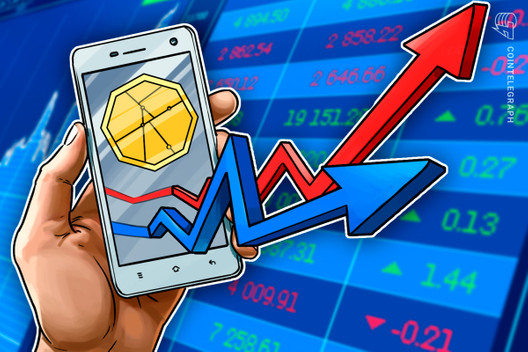Chainlink (LINK) looks for momentum while pro traders target $40
Chainlink (LINK) is the leading oracle provider, and the project has onboarded over 281 crypto projects in 2021. Some of these include heavyweights like Huobi’s ECO Chain, the Hedera Governing Council, and Alchemix.
Launched in Oct. 2020, Chainlink’s verifiable randomness function, or VRF, has also gained notoriety among decentralized applications (dApps). VRF provides an automated source of randomness to ensure prizes and rewards are issued in a verifiably fair fashion.
For example, on Aug. 13, Arbitrum — a layer-two Ethereum scaling solution — launched a beta mainnet service integrated with Chainlink’s oracle data feed and intends to add a “Proof of Reserve” service allowing collateralized assets to be audited using the oracle provider’s web API.
Chainlink offers a secure connection between smart contracts and off-chain data and services, servicing decentralized finance (DeFi) applications, social networks, NFT platforms and interoperability projects.
Big players partner to back Chainlink adoption
Among Chainlink’s major differentials are the node operators, and Swisscom, a Switzerland-based telecommunications company, chose the project for a pilot program on Aug. 5. The company is 51% owned by the Swiss government, and the telecom operator currently has more than 19,000 employees and 6 million subscribers.
On Aug. 10, Bancor, an Ethereum-based decentralized exchange (DEX) and liquidity provider, announced that its upcoming version would integrate Chainlink Keepers to work as external triggers for smart contracts. This tool simplifies the staking experience for liquidity providers and automates advanced trading features.
Bancor holds over $1.5 billion worth of various cryptocurrencies locked in its smart contracts, and this illustrates how Chainlink’s oracle solutions have been forming a critical backbone to the dApps industry.
Derivatives data shows a glass half full
LINK is a crowd favorite, but after retracing 12% from the $30.50 top on Aug. 16, investors have reason to question if the bull trend has come to an end. Fortunately, for bullish investors, derivatives data is signaling that LINK could push to $40 or higher.

Related: The crypto effect: Trading altcoins at the edge of addiction
Let’s take a look at LINK’s derivatives data to assess how traders are dealing with the 14% price correction since the $30.50 top in mid-Aug.

Standing at $260 million, LINK futures’ open interest might seem small compared to the $1 billion-plus held by Ether (ETH), Cardano (ADA), and XRP. The number is relevant considering its $560 million average daily spot exchange volume, but this is also 65% below larger market-cap altcoins according to Nomics’ transparent volume.
Perpetual contracts, also known as inverse swaps, have an embedded rate usually charged every eight hours. This fee ensures there are no exchange risk imbalances. A positive funding rate indicates that longs (buyers) are the ones demanding more leverage.
However, the opposite situation occurs when shorts (sellers) require additional leverage, and this causes the funding rate to turn negative.

As depicted above, the 8-hour fee reached an 0.07% average between Aug. 20 and Aug. 24, which is equivalent to 6.2% per month. This momentary spike rapidly seized as the LINK price crashed below $27 and signaled a well-balanced situation between the leverage used by longs and shorts.
Some analysts might interpret this data as neutral-to-bearish, but the absence of a high futures open interest and a neutral leverage situation is a healthy indicator. This is especially true considering that LINK has rallied 94% since its $13.40 low on July 20.
Consequently, derivatives markets signal a healthy recovery and no impediments for continuing the bullish momentum above $40.
The views and opinions expressed here are solely those of the author and do not necessarily reflect the views of Cointelegraph. Every investment and trading move involves risk. You should conduct your own research when making a decision.









